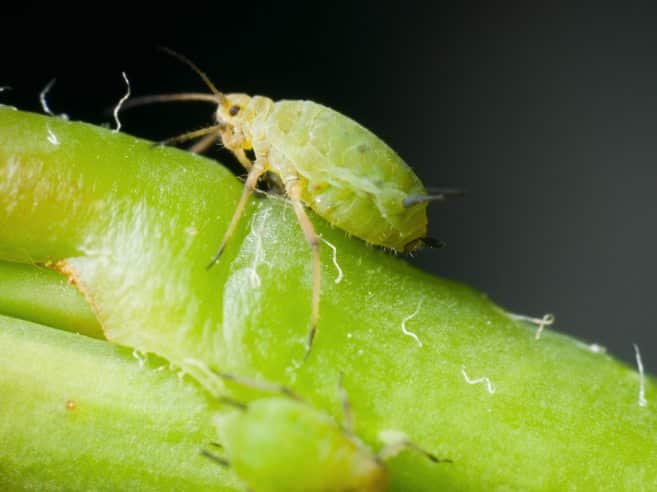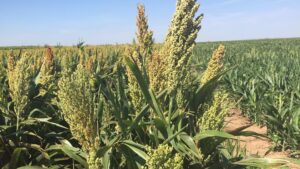Researchers from Umeå University in Sweden and Wageningen University & Research in The Netherlands find a protein that hinders aphid destruction.
There are many pests that plague grower’s crops, but one of the worst is the aphid. Aphids work in colonies to suck sap from plants and affects anything from wheat to soybeans to cotton. In addition to sucking sap, aphids excrete honeydew droplets that causes mold to develop on the crop’s leaves.
Growers and seed companies alike are trying to combat these pesky pests with pesticides and different variations of plants, but what are they missing?
A research team from Umeå University in Sweden and Wageningen University & Research in The Netherlands thinks they have come a step closer to the solution of this problem. Led by Maarten Jongsma (Wageningen) and with Karen Kloth, first Ph.D. student at Wageningen University & Research and now post-doctoral researcher in the Umeå Plant Science Centre, the team found a protein that can restrict the aphid’s ability to feast on a crop.
“Aphids have a slender, telescoping mouth, which they use to penetrate the plant in order to feed from the sugar-rich sap of the plant,” says Kloth. “The protein is located in the vessels, called ‘sieve tubes,’ which transport this sap. We have seen that aphids spend less time feeding, they prematurely interrupt their feeding sessions when plants have the protein. Particularly when it is warm and plants make more of the protein. We also observed that aphids ingest sap at a slower rate due to the protein.”
Kloth says the team was able to measure the intake from the aphids by counting the honeydew droplets that they secreted.
“We can think of two main reasons for the reduced ingestion rate. Either the sap transport in the plant is impaired by the protein,” says Kloth. “If plants have a slower sap transport, the sap entry into the aphid would also be slower. We, however, don’t think this is the case. Slow sap transport would have a negative impact on plant growth, and we have observed the contrary; the protein improves flower development and seed production during heat stress. Another option, which we think is more likely, is that the protein occludes the aphid food canal.”
Kloth notes that this protein can be found in almost all vascular plants excluding grasses, but it would need to be verified that the proteins have the same functionality against aphids.
In the study, the team used 350 species of Arabidopsis thaliana, a mustard seed variety, from across the Northern hemisphere. When asked the location of the plants with higher resistance to aphids, Kloth said that these plants originated more often from regions with high-temperature variations, hot summers and cold winters.
Kloth is enthusiastic about the next steps for plant breeding with this discovery. “If we could improve natural host plant resistance in crops, we would be able to reduce the application of chemicals and supply more sustainable food products. There are examples of other aphid resistance traits, which are already used in plant breeding, such as the Nr gene in lettuce and the Vat gene in melon. However, it is a quantitative resistance, which means that it cannot eradicate aphid pest completely. That brings the advantage that there is a low risk that aphids will adapt to the resistance.”
Even with the chance that aphids could adapt to the resistance, the team is excited about where this research will lead for plant breeding, and they hope to continue learning more details about the resistance mechanism, including the biological processes responsible for the resistance and the possibility to use this protein in crops in order to produce more sustainable crops.











